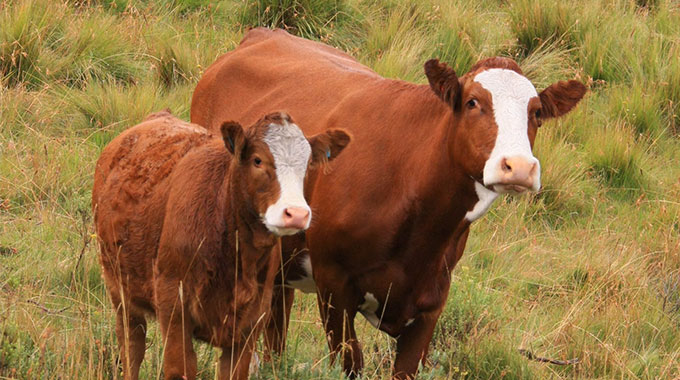
The Sunday News

ONE of the enduring challenges of livestock production among smallholder farmers is the deterioration in quality, of animals being produced. This is a result of a compound of factors that range from poor husbandry practices to ineffective range-land management practices.
However, inbreeding depression is one major factor that needs to be halted as soon as possible.
Inbreeding refers to mating of animals that are closely related genetically and this results in what is referred to as inbreeding depression, which is a manifestation of negative outcomes of inbreeding.
The negative outcomes include among others the decrease in frame sizes of animals. It is very common in some districts, especially in Matabeleland North Province and other Mashonaland provinces, to see a five-year-old ox, which is barely above the size of a seven-month weaner in frame size.
Extension messaging has been loud, calling for farmers to buy better bulls and infuse new and better genetics into their gene pool, to improve the quality of animals being produced. However, the reality is more complex than that, especially in communal farming settings.
My assessment based on years of working with smallholder communal livestock farmers, is that a more holistic and comprehensive approach is needed, if breeding improvement using live bulls can be effective.
There is a need for participation and concurrency of all involved in that community. Buying a bull and throwing it into a communal jungle will have limited effect because of a plethora of challenges, which I will catalogue here. The first hurdle is that of community jealousy.
Petty as it might sound, it exists and it has contributed to the demise of most high-quality expensive bulls that have been bought either individually, or by development programmes and thrown into the community.
This petty jealousy will see your bull being killed either by snaring or axing. Remember, your bull is most active during the cropping season when most cows are in good body score condition and are coming on heat.
Your bull will wonder with the lady on heat and the owners of the cow being serviced are happy about it, but as soon as it is done servicing, they let your bull go and it wanders straight into people’s crop fields and it will be axed just to spite the owner who thinks his animal is special because it is expensive!
Mind you, most servicing happens at night when cows come on standing heat, after that, the bull goes away early morning and goes to feast on people’s crop fields and the result is an axe on your three thousand dollar bull. Because of petty jealousy, the crop field farmer is ready to axe your bull for grazing on a few poorly tended crops instead of seeking financial recourse from you the owner of the bull, they will settle matters with the bull!
The second challenge is the presence of nondescript low-quality bulls (iminjanja) in the communal herd. These provide competition to your bull and they may overpower your expensive bull in a fight and it means each time you have a cow on heat, instead of your pricey bull servicing the cow, it will be chased away by the low-quality nondescript bull.
So, you have an expensive bull that is being denied the right to mate with your cows by a neighbour’s munjanja bull. Mind you, these expensive bulls come with no horns because it provides better aesthetics for the market, but it disadvantages them when it comes to a fight for territory with the sharply horned local bulls.
The third challenge for the use of bulls in a communal setting is that, you have no control over which bull mates with your cows because animals graze together in the veld and mating rights are reserved for the more powerful. Again, your bull may wander off with some cow on heat and it goes from one herd to another while your cows come on heat in its absence and get serviced by the munjanja bull.
The other deterrent to acquiring a good bull for most smallholder communal farmers, is that mating is usually seasonal in most communal areas because of the available feed resources. It happens around February and March, after the rains and good grass establishment and when the dry season begins, cows no longer come on heat because of a deteriorating body condition. So, the bull goes on leave for eight months from May up to December and it only starts working again around the end of January.
As a farmer, you have the responsibility of looking after a highly mobile and non-productive bull for eight months! Having said all this, the use of live bulls remains the only effective way of improving breeds and the quality of animals reared by smallholder farmers in communal settings.
The community needs to agree on important fundamentals for this to work and this includes castrating all poor-quality bulls and letting the cows be exposed only to the desired bull.
Community members benefitting from this bull should protect it as a communal asset even if it is individually owned. Farmers with crops that have been grazed by a stray bull should seek recourse from the owner of the bull, as opposed to killing or crippling the bull with an axe.
The whole community has to want the breed and quality improvement being brought by the one who bought the bull, or else there will be unnecessary resistance just to spite the owner of the bull. Uyabonga umntaka MaKhumalo.
Mhlupheki Dube is a livestock specialist and farmer. He writes in his capacity. Feedback [email protected] cell 0772851275.



